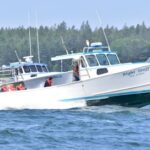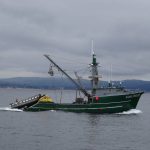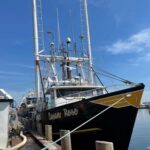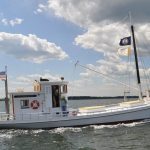Daily Archives: September 2, 2016
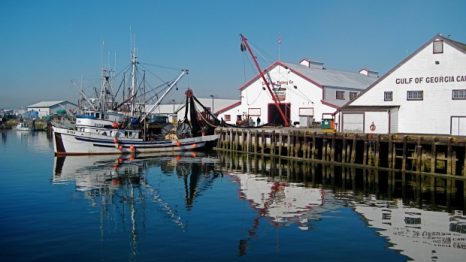
Ottawa investing $33.5M in British Columbia harbour improvement projects
The federal government announced it will invest $33.5 million to carry out harbour improvement projects — including wharf construction, maintenance and dredging — at 29 small harbours throughout B.C. “Small craft harbours are the hub for our fishing industry,” said Joe Peschisolido, Liberal MP for Steveston-Richmond, who announced the funding on Aug. 31. “Fish is actually now our second most important food export after wheat, and creates a lot of economic activity. If you want to create wealth … you want to have an efficient economy, you need infrastructure and small craft harbours are an integral part of our infrasturure. Almost a third of that funding will go to the Steveston Harbour Authority in Richmond, which serves over 500 commercial fishing vessels. Read the story here 16:12
Obama brings fresh attention to an expanded marine sanctuary (and the fishermen it hurts)
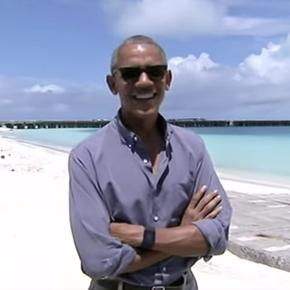 Yesterday, while visiting Hawaii’s Midway Atoll, President Obama officially made the size of a marine monument twice the size of Texas while highlighting his Climate Change commitment. The monument’s new size has angered local fishermen and Native Hawaiians. The monument, created by President George W. Bush in 2006, puts more land and waters off limits to local fishermen and recreation, and Obama’s critics are calling his actions heavy-handed. The monument is now the largest protected marine Environment in the world or roughly 3.5 times the size of California. A native of Hawaii, Obama used his executive power to expand the Papahānaumokuākea Marine National Monument, making large swaths of fertile fishing grounds off-limits to fishermen. That means they now have to travel at least four times further out to sea to catch fish like tuna, a costly adventure that actually emits more greenhouse gas emissions because of the increased travel time. Hawaiians not only consume three times more fish than landlocked Americans but fishing is a major source of local commerce. Read the rest here 15:03
Yesterday, while visiting Hawaii’s Midway Atoll, President Obama officially made the size of a marine monument twice the size of Texas while highlighting his Climate Change commitment. The monument’s new size has angered local fishermen and Native Hawaiians. The monument, created by President George W. Bush in 2006, puts more land and waters off limits to local fishermen and recreation, and Obama’s critics are calling his actions heavy-handed. The monument is now the largest protected marine Environment in the world or roughly 3.5 times the size of California. A native of Hawaii, Obama used his executive power to expand the Papahānaumokuākea Marine National Monument, making large swaths of fertile fishing grounds off-limits to fishermen. That means they now have to travel at least four times further out to sea to catch fish like tuna, a costly adventure that actually emits more greenhouse gas emissions because of the increased travel time. Hawaiians not only consume three times more fish than landlocked Americans but fishing is a major source of local commerce. Read the rest here 15:03
Judge Lets East Sand Island Cormorant Cull Continue
 A federal judge will allow the Army Corps of Engineers to keep shooting native cormorants by the thousands, to reduce predation on young salmon, despite objections from environmentalists who say the slaughter doesn’t address the real cause of dwindling salmon populations: hydroelectric dams. The Audubon Society of Portland led an April 2015 lawsuit against the Corps of Engineers and the U.S. Fish & Wildlife Service, claiming that the plan scapegoated a natural predator and had little effect on survival rates of young salmon. Chief among the Audubon Society’s arguments is that there are so many factors that determine whether a salmon will return from sea to spawn in its native waters that the government’s focus on cormorant predation was not only fruitless, but hurt a native bird protected by the Migratory Species Act. The government’s plan focused on East Sand Island, home to the largest breeding population of double-crested cormorants in North America. The 60-acre island is nestled in the fertile brackish waters where the Columbia River empties into the Pacific Ocean. Read the rest here 14:11
A federal judge will allow the Army Corps of Engineers to keep shooting native cormorants by the thousands, to reduce predation on young salmon, despite objections from environmentalists who say the slaughter doesn’t address the real cause of dwindling salmon populations: hydroelectric dams. The Audubon Society of Portland led an April 2015 lawsuit against the Corps of Engineers and the U.S. Fish & Wildlife Service, claiming that the plan scapegoated a natural predator and had little effect on survival rates of young salmon. Chief among the Audubon Society’s arguments is that there are so many factors that determine whether a salmon will return from sea to spawn in its native waters that the government’s focus on cormorant predation was not only fruitless, but hurt a native bird protected by the Migratory Species Act. The government’s plan focused on East Sand Island, home to the largest breeding population of double-crested cormorants in North America. The 60-acre island is nestled in the fertile brackish waters where the Columbia River empties into the Pacific Ocean. Read the rest here 14:11
Yes, I butcher whales. It’s certainly no worse than what happens in slaughterhouses
 I ( Heri Joensen ) live in the Faroe Islands, where whaling has been part of our way of life for centuries. Last month, I was working on a long-finned pilot whale the day after it had been killed. Since more than four-fifths of the world’s population eats meat, I thought it would be fine to share such a picture — it’s no secret, surely, how meat is produced? But uproar followed. A campaign was launched to cancel my band’s (Týr) gigs and stop venues booking us. We seldom see pictures from inside slaughterhouses. As a result, people have strange ideas about meat — they seem to believe that animals are willingly and painlessly slaughtered behind closed doors. Ethically, I don’t see the difference between slaughtering wild whales and farmed cows. All animals suffer: if you can slaughter cows for meat, why not slaughter wildlife? Video, Read the story here 12:37
I ( Heri Joensen ) live in the Faroe Islands, where whaling has been part of our way of life for centuries. Last month, I was working on a long-finned pilot whale the day after it had been killed. Since more than four-fifths of the world’s population eats meat, I thought it would be fine to share such a picture — it’s no secret, surely, how meat is produced? But uproar followed. A campaign was launched to cancel my band’s (Týr) gigs and stop venues booking us. We seldom see pictures from inside slaughterhouses. As a result, people have strange ideas about meat — they seem to believe that animals are willingly and painlessly slaughtered behind closed doors. Ethically, I don’t see the difference between slaughtering wild whales and farmed cows. All animals suffer: if you can slaughter cows for meat, why not slaughter wildlife? Video, Read the story here 12:37

National Hurricane Center: Tropical Storm Hermine Projected Path Update 8 AM
NOAA’s National Hurricane Center in Miami, Florida issued a Public Advisory at 8 a.m. EDT on Friday, September 2, 2016, for Tropical Storm Hermine that made landfall on Florida and now threatens the U.S. east coast. A Tropical Storm Watch has also been issued for the United States east coast from Duck, North Carolina to Sandy Hook, New Jersey, including Chesapeake Bay from Smith Point southward and southern Delaware Bay. Interests along the United States northeast coast should monitor the progress of this tropical cyclone. Projected Path Tropical Storm Hermine is located about 120 miles west-southwest of Savannah Georgia, and is moving to the north-northeast at 14 mph. NHC forecasters believe that the tropical cyclone will continue north-northeastward through Friday and Saturday. On the forecast track, the center of Tropical Storm Hermine will move across southeastern Georgia today, move across the coastal Carolinas tonight and move offshore of the North Carolina coast on Saturday. Link 12:07
We import 92% of our seafood. No wonder Something’s fishy about dismal San Diego seafood sales
 San Diegans could be eating more locally caught fresh fish, snails, squid, and lobsters, says a new study by academics from the Scripps Institution of Oceanography and USD, but globalization and a lack of reliable information about where the region’s edible seafood actually comes from is getting in the way. A total of 86 seafood markets served the city of San Diego’s 1.3 million residents in the first half of 2015,” says the August 29 paper in the Future of Food: Journal on Food, Agriculture and Society. “Only 8% of seafood markets consistently carried San Diego–sourced seafood, while 14% carried it on occasion, or at least likely did.” Worse yet, “None of the ethnic markets and only 7% of large chain stores carried San Diego–sourced seafood; these two market types comprised 72% of all seafood markets in San Diego.” Read the story here 11:31
San Diegans could be eating more locally caught fresh fish, snails, squid, and lobsters, says a new study by academics from the Scripps Institution of Oceanography and USD, but globalization and a lack of reliable information about where the region’s edible seafood actually comes from is getting in the way. A total of 86 seafood markets served the city of San Diego’s 1.3 million residents in the first half of 2015,” says the August 29 paper in the Future of Food: Journal on Food, Agriculture and Society. “Only 8% of seafood markets consistently carried San Diego–sourced seafood, while 14% carried it on occasion, or at least likely did.” Worse yet, “None of the ethnic markets and only 7% of large chain stores carried San Diego–sourced seafood; these two market types comprised 72% of all seafood markets in San Diego.” Read the story here 11:31
Test fishing for flounder begins off Fukushima coast
 Fishermen here caught flounder for sales on Sept. 2 for the first time since the 2011 disaster at the Fukushima No. 1 nuclear plant. Eleven boats equipped with dragnets left Hisanohama wharf in the morning, and they snared five of the bottom-dwelling flatfish, previously a specialty of Fukushima Prefecture. “It is a big step (for flounder fishing),” said Akira Egawa, 69, head of the Iwaki city fishery association. “We are going to recover one by one.” On Aug. 25, 10 kinds of fish, including flounder, were added to the list for “test fishing” off the coast of Fukushima Prefecture. These fish can be caught for the resumption of sales of “safe” fish. In 2010, 734 tons of flounder were caught in Fukushima Prefecture, the third most in Japan. Link 09:47
Fishermen here caught flounder for sales on Sept. 2 for the first time since the 2011 disaster at the Fukushima No. 1 nuclear plant. Eleven boats equipped with dragnets left Hisanohama wharf in the morning, and they snared five of the bottom-dwelling flatfish, previously a specialty of Fukushima Prefecture. “It is a big step (for flounder fishing),” said Akira Egawa, 69, head of the Iwaki city fishery association. “We are going to recover one by one.” On Aug. 25, 10 kinds of fish, including flounder, were added to the list for “test fishing” off the coast of Fukushima Prefecture. These fish can be caught for the resumption of sales of “safe” fish. In 2010, 734 tons of flounder were caught in Fukushima Prefecture, the third most in Japan. Link 09:47
Coast Guard officer diagnosed with PTSD for seven hour work day
 Lt. j.g. Evan Summerlin has told shipmates and relatives that he is currently suffering from post-traumatic stress disorder, a source involved in the investigation reports. Summerlin recently pulled a seven hour work day filing investigation forms, emailing case pictures, and scheduling meetings. “I used to love coming to work,” Summerlin said. “I used to chat it up with Bridget in Admin, try to beat my high score on Temple Run, and still have enough time to pretend to know what I’m doing. Now I have to do this thing called ‘work?’” A coast Guard Spokesman spoke about Summerlin’s mental state. “While it seems like he has a healthy medical record,” the spokesman said, “he has been known to whine profusely on a daily basis and delegate shit-work to subordinates.” Read the rest here 08:18
Lt. j.g. Evan Summerlin has told shipmates and relatives that he is currently suffering from post-traumatic stress disorder, a source involved in the investigation reports. Summerlin recently pulled a seven hour work day filing investigation forms, emailing case pictures, and scheduling meetings. “I used to love coming to work,” Summerlin said. “I used to chat it up with Bridget in Admin, try to beat my high score on Temple Run, and still have enough time to pretend to know what I’m doing. Now I have to do this thing called ‘work?’” A coast Guard Spokesman spoke about Summerlin’s mental state. “While it seems like he has a healthy medical record,” the spokesman said, “he has been known to whine profusely on a daily basis and delegate shit-work to subordinates.” Read the rest here 08:18
Pacific Council on proposed Marine Monument
Today, the 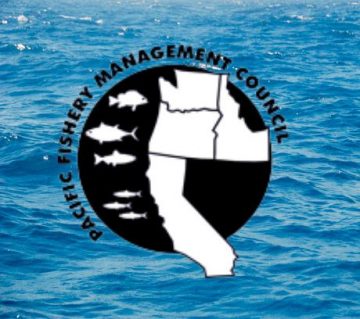 Pacific Fishery Management Council sent a letter to President Obama expressing concern about “how these National Monument designations would impact our fishery management efforts in the west coast Exclusive Economic Zone.” In it, the Council stresses: 1. All of the areas proposed for designation already have significant protections from specific fishing activities. For example – Essential Fish Habitat requirements under the Magnuson-Stevens Fishery Conservation and Management Act; and Cowcod Conservation Areas off the Southern California coast. 2. Fishery management decisions are best done in a thoroughly transparent public process rather than being done with limited involvement of certain stakeholders. 3. The social and economic importance of those areas cannot be understated. Read the letter from the PFMC, and the letter from the Council Coordination Committee by clicking here 07:44
Pacific Fishery Management Council sent a letter to President Obama expressing concern about “how these National Monument designations would impact our fishery management efforts in the west coast Exclusive Economic Zone.” In it, the Council stresses: 1. All of the areas proposed for designation already have significant protections from specific fishing activities. For example – Essential Fish Habitat requirements under the Magnuson-Stevens Fishery Conservation and Management Act; and Cowcod Conservation Areas off the Southern California coast. 2. Fishery management decisions are best done in a thoroughly transparent public process rather than being done with limited involvement of certain stakeholders. 3. The social and economic importance of those areas cannot be understated. Read the letter from the PFMC, and the letter from the Council Coordination Committee by clicking here 07:44
Lobster prices in New England have spiked to their highest level in more than a decade
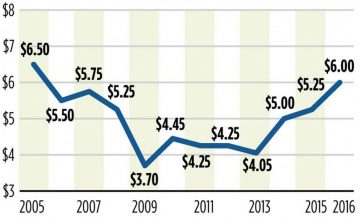 Annie Tselikis, marketing director at Maine Coast Co. and executive director of the Maine Lobster Dealers’ Association, said demand for live and processed lobster has been strong all summer.“We have seen higher prices in the marketplace this summer … on par with the demand that we’re seeing,” she said. “It’s been crazy since the Fourth of July.” Tselikis said a big reason for the boost in demand for processed lobster is that distributors have stepped up their efforts to create new markets. Much of the recent growth in demand has come from Asian markets including China, South Korea, Hong Kong, Singapore and Vietnam, she said. “We’re seeing lobster in places where it didn’t exist before,” Tselikis said. Read the story here 07:04
Annie Tselikis, marketing director at Maine Coast Co. and executive director of the Maine Lobster Dealers’ Association, said demand for live and processed lobster has been strong all summer.“We have seen higher prices in the marketplace this summer … on par with the demand that we’re seeing,” she said. “It’s been crazy since the Fourth of July.” Tselikis said a big reason for the boost in demand for processed lobster is that distributors have stepped up their efforts to create new markets. Much of the recent growth in demand has come from Asian markets including China, South Korea, Hong Kong, Singapore and Vietnam, she said. “We’re seeing lobster in places where it didn’t exist before,” Tselikis said. Read the story here 07:04

































